Thursday,
July 22
|
|
I continued to run my program on
times that I had looked at before.
|
|
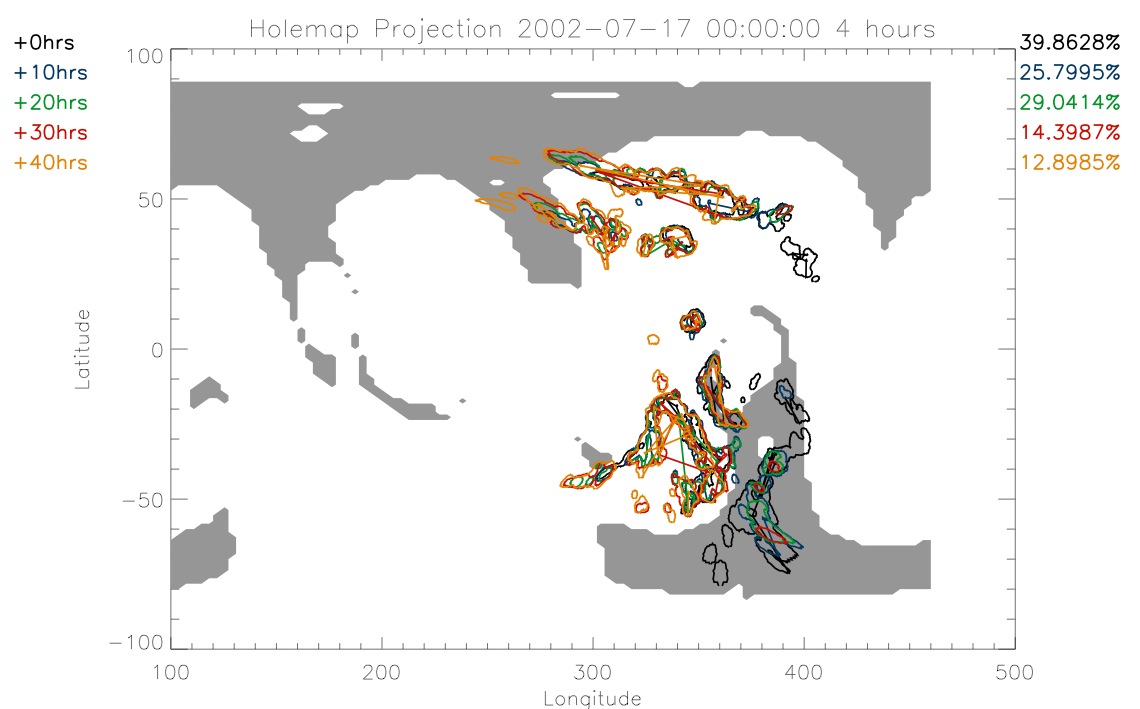
|
|

|
|

|
|
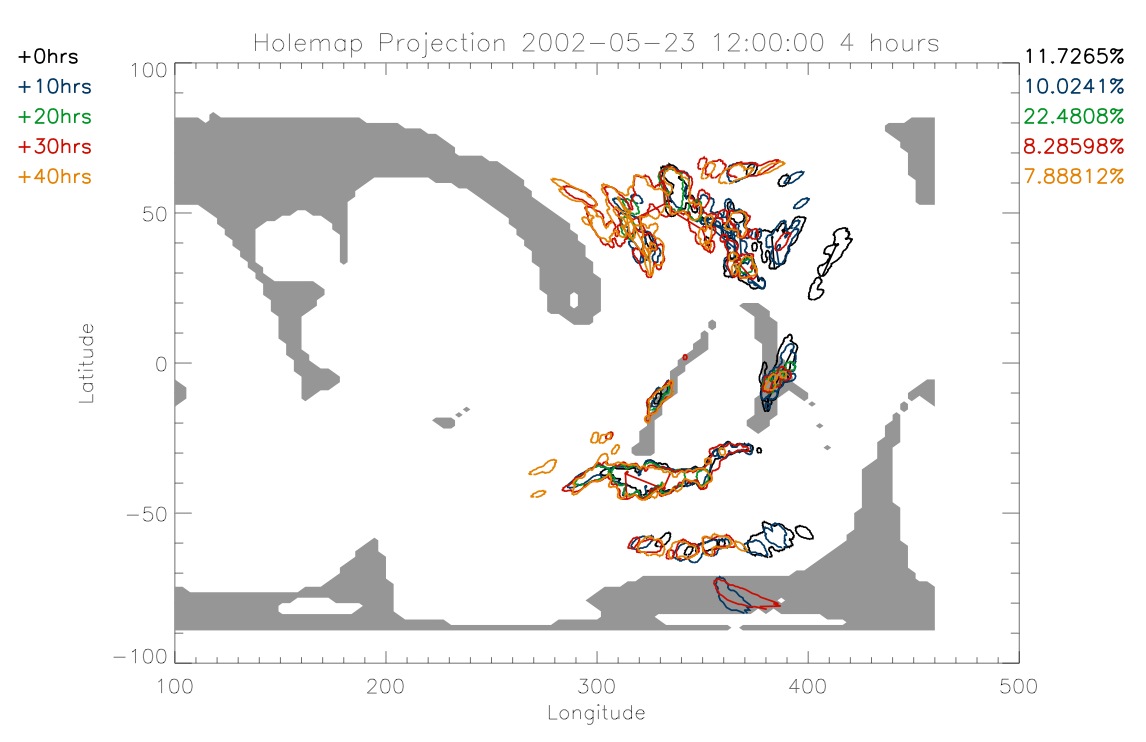
|
|
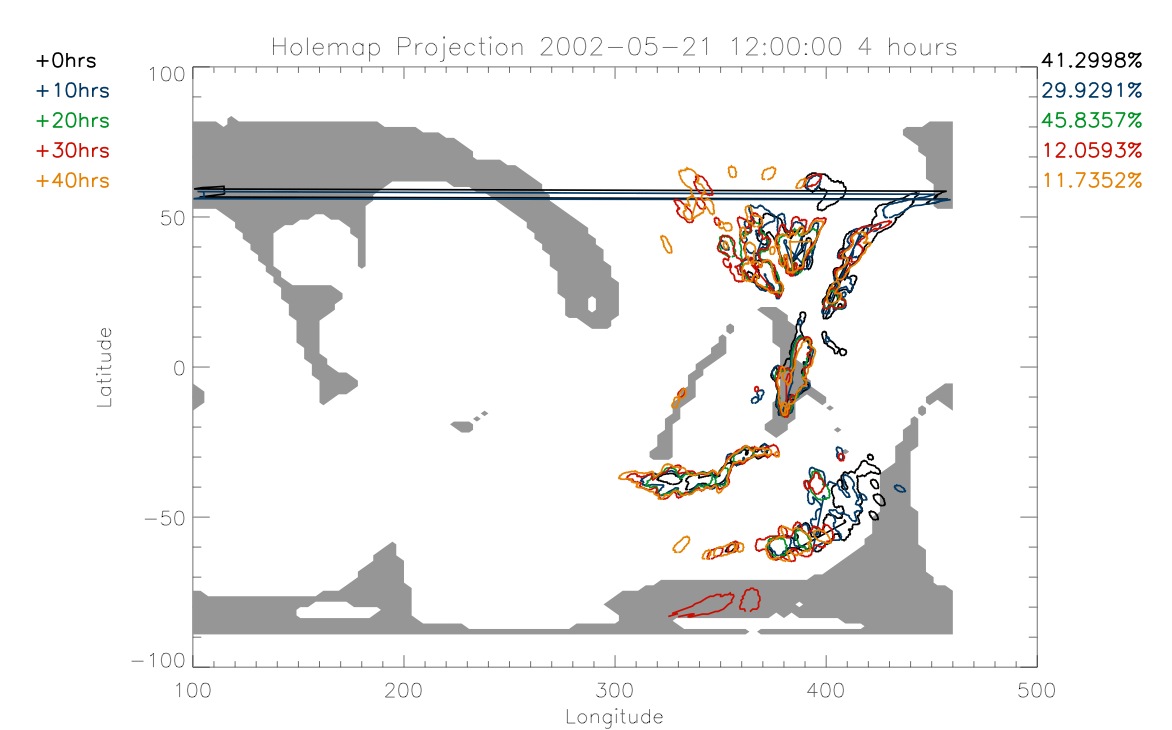
|
|

|
|

|
|
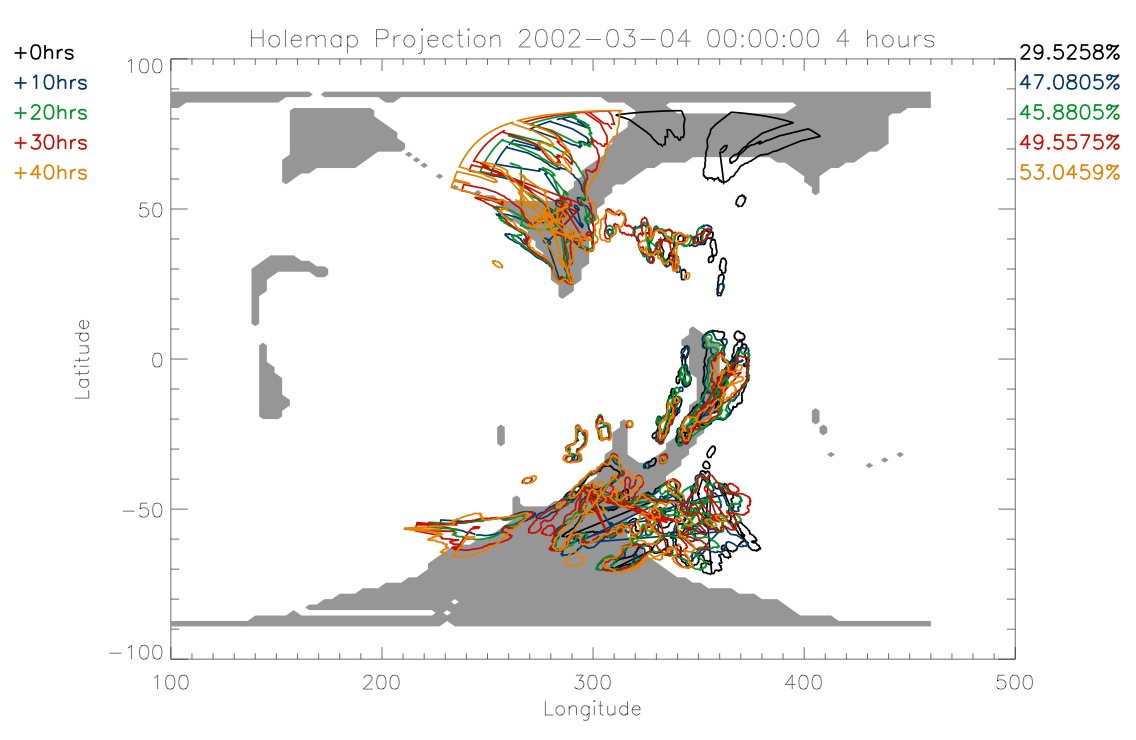
|
|
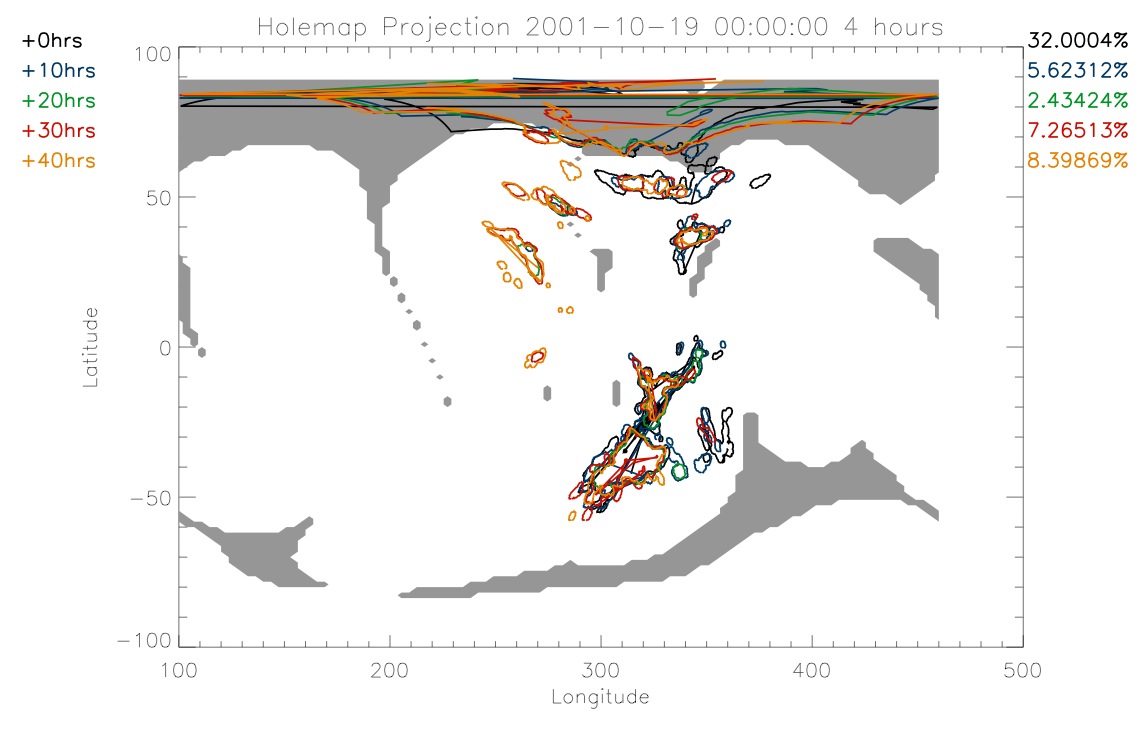
|
|
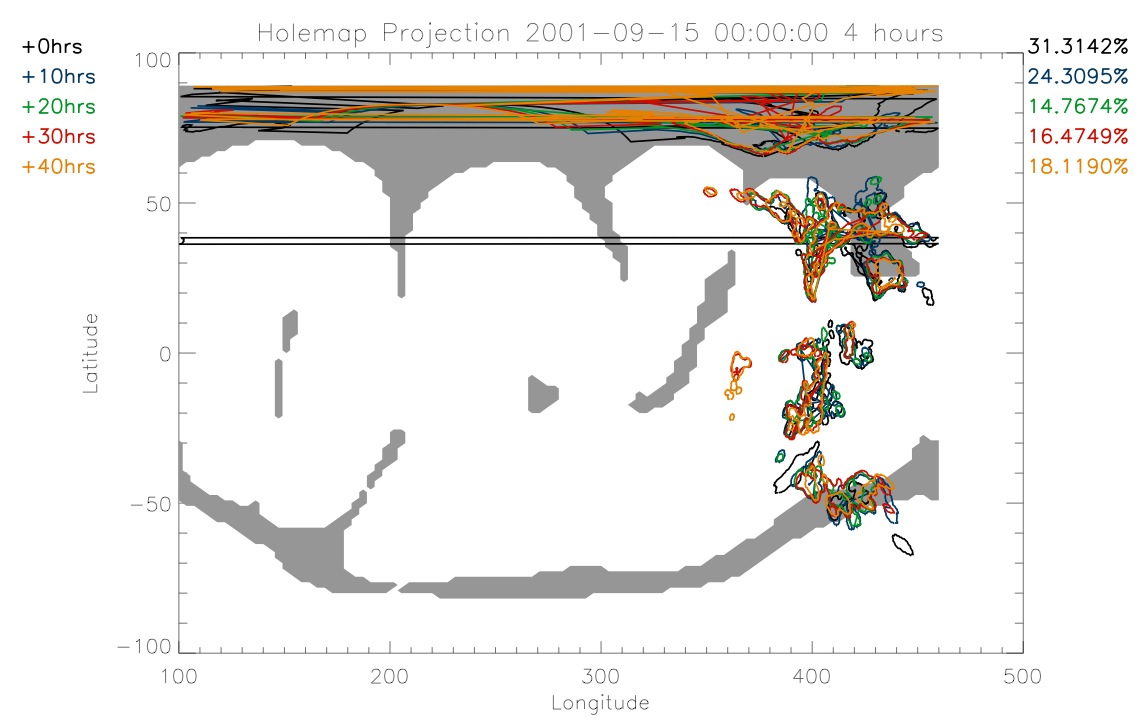
|
|
Wednesday,
July 21
|
|
With my program running
succesfully(finally) I started running it on data that I had already
created plots for. The percentages are displayed in the upper right
hand corner. They are the percentage of the coronal hole regions that
overlap with open magnetic field regions. I have calculated the
percentage, and color coded them, for each time interval as indicated
in the upper left hand corner. These percentages may be a little low
for some data sets. This is because I removed the regions outside of
-80 to 80 degrees longitude in the magnetic field region in order to
ovoid contortion that made it impossible to calculate what I wanted to
find. I didn't remove this data from the coronal holes though which
leads to a slight error in the percentages. The error isn't too
significant and I know in which direction it skews the data.
|
|
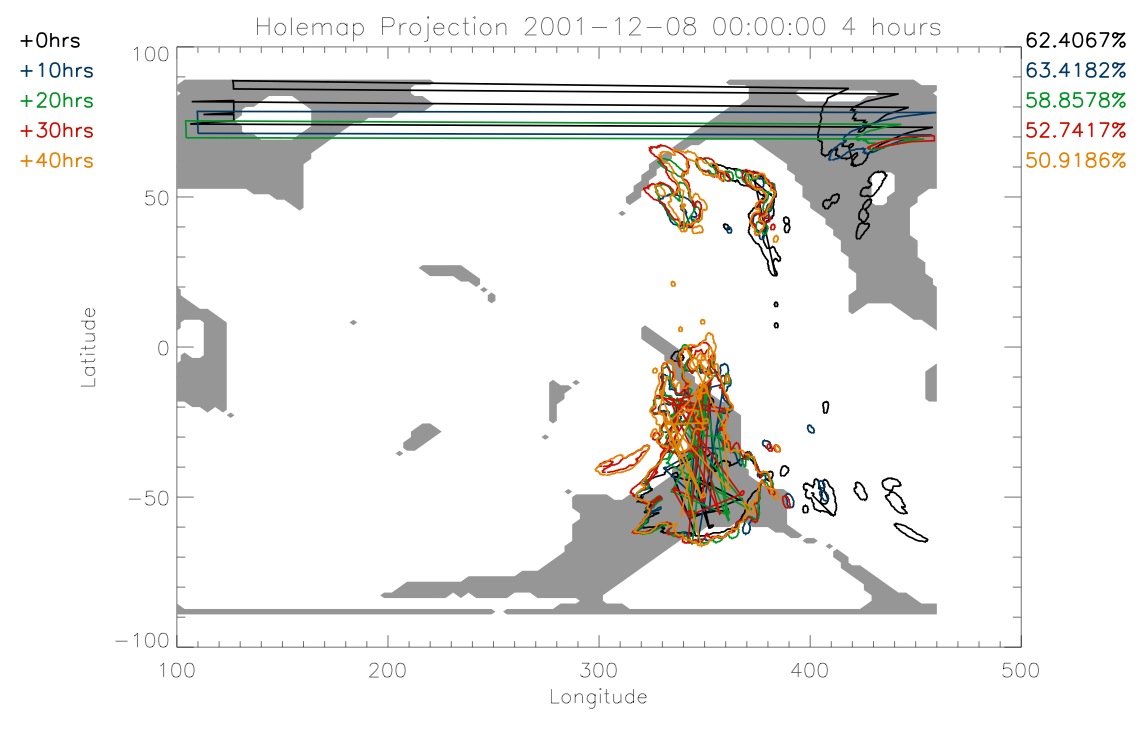
|
|
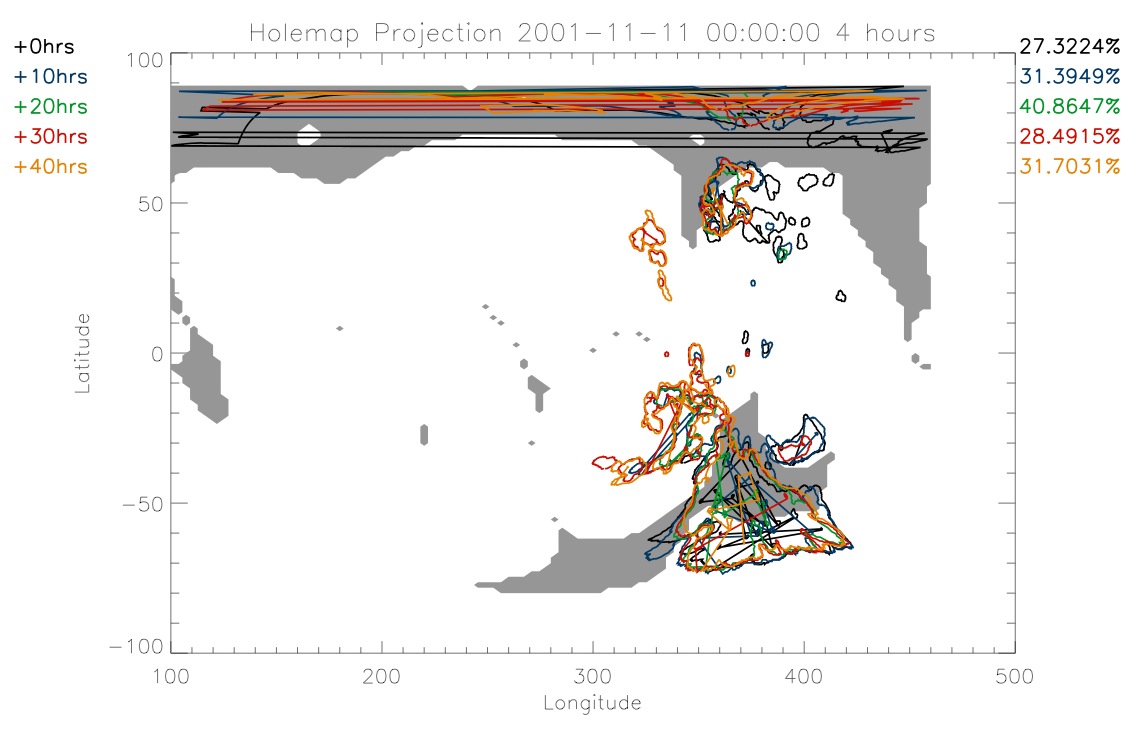
|
|
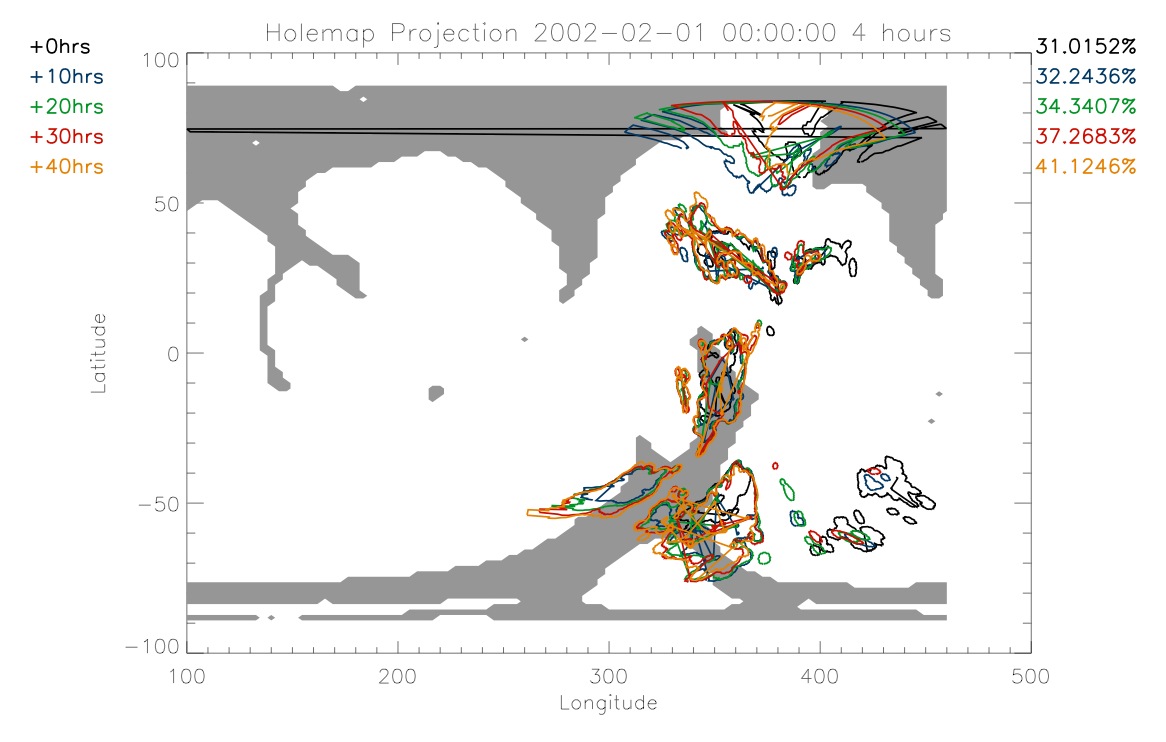
|
|

|
|
Tuesday,
July 20
|
|
Today I figured out the
tirigonmetry and then started to run the program on data to see if it
worked successfully. I ran into a few problems. The program will stop
running if polyfillv is unable to successfully fill in a region. I had
to put in a few fixes for that so it wouldn't get hung up on areas that
it can't fill in because there are only a couple of pixels. I also
realized that my percentages didn't seem right. The coronal holes
weren't changing much but the percentages were dropping at each time
step. It took me a while to find what was wrong but it turned out that
I hadn't subscripted a variable correctly in a for loop so it wasn't
updating that variable. This caused the coronal holes to not be in the
correct position and thus giving strange perecentages. This only
happened when calculating the percentages and not in the plotting
procdure so visually I wasn't seeing it.
|
|
Monday,
July 19
|
|
With everything running
succesfully I started to run the program on the data this morning.
Unfortunately I had taken into account that pixels near the limb
contain more area of the sun then those in the center. Thus I have to
disregard the data from this morning and work out some trigonometry to
get more accurate results.
|